Who Owns Australia’s Farms: the billion-dollar investors and biggest landholders
Offshore pension funds have been able to tighten their stranglehold on Australian farms thanks to softer local demand. Discover the biggest players of 2024 and where they hail from.

Cashed-up overseas pension and sovereign wealth funds have seized on an opening in the Australian rural property market to grow the value of their portfolios by billions of dollars.
An annual investigation into Who Owns Australia’s Farms by The Weekly Times has shown an explosion in institutional investment in farmland over the past 12 months as demand from family interests eased due to higher interest rates, softer farmgate returns and concerns about a tougher season.
The investigation found the 10 biggest investors in Australian agriculture increased the size of their portfolios to more than $24 billion in combined value. Of the 10 largest investors, five were Canadian with combined local assets worth $12.5 billion.
The biggest investor was Canada’s PSP Investments – the pension for the Canadian public service and the world-famous Royal Canadian Mounted Police – who has put together a huge portfolio of farmland assets over the past five years now worth $7.5 billion, ahead of the local and overseas-backed Macquarie Agriculture, with $4 billion of assets, and New York-based TIAA-CREF whose Nuveen Natural Capital portfolio is now valued at $2.5 billion.
There has also been movement on the list of Australia’s biggest landholders by hectares with a carve-up of the MacLachlan family’s Jumbuck Pastoral empire and a significant by Canada’s Alberta Management Investment Corporation affecting rankings.
For the third successive year, the biggest landholders were Viv Oldfield and Donny Costello, whose empire spans 9.2 million hectares including through their Crown Point Pastoral business, ahead of the ASX-listed Australian Agricultural Company’s 6.62 million hectares and the Queensland Investment Corporation-backed North Australian Pastoral, with more than six million hectares.
AUSTRALIA’S BIGGEST LANDHOLDERS BY VALUE
1. PSP Investments
Canada
$7.5 billion of assets
PSP – three simple letters that have reshaped the future of Australian corporate agriculture.
Founded just over 20 years ago, PSP — the Ottawa-based pension fund for the Canadian public sector, Canadian armed force and the world-famous Royal Canadian Mounted Police — has amassed a huge land and water portfolio worth an estimated $7.5 billion since arriving on Australian shores less than a decade ago.
Such has been the dominance of PSP, its stamp sits at the bottom of three of the biggest deals in the history of Australian agriculture: the $860 million purchase of Olam Orchards’ almond plantation in northern Victoria in 2019, the $854 million takeover of the ASX-listed Webster Limited in 2020, as well as the $600 million buyout of NSW farming giant Auscott Limited in 2021.
According to its latest annual report, PSP’s Natural Resource arm had $A13.95 billion net assets under management in March last year, with the Oceania region accounting for 49.2 per cent of investments.
Working with key agribusinesses to grow scale, PSP’s Australian investments include pastoral giant Hewitt, which runs more than 200,000 sheep and cattle over 5.6 million hectares, major walnut, pecan, macadamia and almond producer Stahmann Webster and Aurora Dairies, which comprises more than 50 farms running 40,000-plus cows to produce 253 million litres of milk.
Its cropping investments include a stake in Australian Food and Fibre, run by the Robinson family, whose investments include Auscott Limited, and Altora Ag, which operates across 65 properties and 153,000 arable hectares. There’s also considerable investments in the horticulture space.
In March this year, PSP paid $180 million for a major stake in Queensland egg producer Ellerslie Free Range Farms, partnering with the Hall family whose business has grown to employ about 400 people.
In April, Altora Ag paid $70 million for Duxton Farms’ 8000-hectare Timberscombe Aggregation at Forbes in NSW.
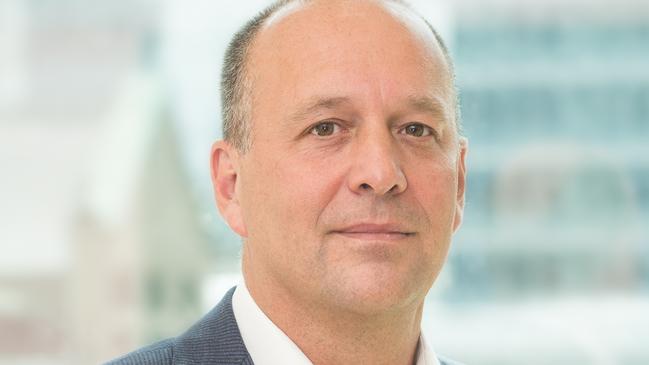
2. Macquarie Agriculture
Australian-based fund
$4 billion-plus of assets
Macquarie Agriculture has four billion reasons to be considered among the cream of Australia’s farming crop.
Macquarie, which owns the bohemeth Paraway Pastoral Company, Viridis Ag, and Vitalharvest businesses via Macquarie Infrastructure and Real Assets, stands as the second-biggest investor in Australian agriculture by value.
Headed by Liz O’Leary, its Australian footprint spans about 4.5 million hectares and includes major assets such as 100 per cent ownership of the nation’s biggest cotton farm, Cubbie Station, and Cowal Agriculture in Queensland, as well the one million-hectare Tanbar Station and 1.5 million-hectare Davenport Downs property under its Paraway Pastoral business.
Spread across Queensland, NSW and Victoria, Paraway operates 26 stations across 4.4 million hectares carrying more than 220,000 cattle and 250,000 sheep.
Macquarie’s specialised broadacre row cropping vehicle, Viridis Ag, was founded in December 2017 and operates 12 aggregations across 113,500 hectares in Western Australia, South Australia and NSW.
Viridis’ most recent acquisition was in May 2021 with the 7550-hectare Glendore property on South Australia’s Eyre Peninsula.
Macquarie, an Australian-managed fund backed by local and global investors, acquired the Vitalharvest Freehold Trust in 2021 for $357.35 million. Vitalharvest comprises four berry and citrus farms in NSW and Tasmania and three in the Riverland region of South Australia, leased to the Costa Group until December 2040.
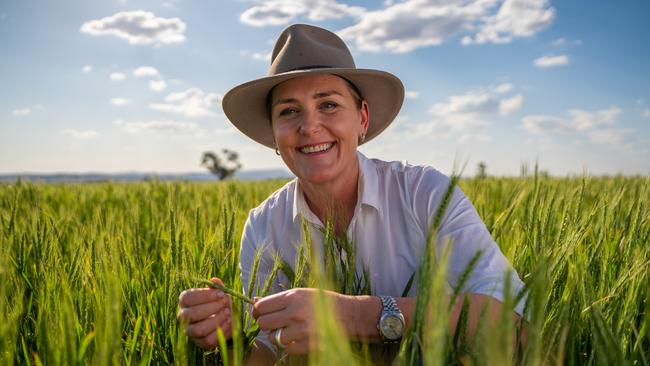
3. TIAA-CREF/Nuveen Natural Capital
United States
$2.5 billion of assets
Nuveen Natural Capital has made on the Australian farming landscape amassing a portfolio of more than 65 properties and agribusinesses occupying 350,000 hectares valued at a whopping $2.5 billion.
Backed by the New York-based Fortune 100 financial company Teachers Insurance and Annuity Association of America, and with supporting capital from 50 other global investors, Nuveen Natural Capital and its predecessor Westchester Group has been a constant on the Australian farming landscape for more than 15 years.
It has strategic cropping and horticultural assets spread across NSW, Western Australia, Queensland and Victoria.
Founded in 1986, in Champaign, Illinois, using proprietary capital provided by TIAA Westchester took its first step outside the US with investments in Australia in 2007 and now has $US12.4 billion across 600 assets in 10 countries globally.
The bulk of the Australian business is invested in row cropping, with assets in Western Australia, Queensland, NSW and Victoria. More recently the business has expanded into permanent crops such as almonds and macadamias, and viticulture.
Nuveen has had a busy start to 2024. In February it paid $14 million for Treasury Wine Estates’ 552-hectare Heathcote vineyard portfolio near Corop in Victoria. In March it purchased the 14,074-hectare Sunshine Farms Aggregation near Forbes in the NSW Central West region from AAM Investment Group. At listing, the aggregation was expected to command offers of more than $90 million.

4. CK Life Sciences
Hong Kong
$2 billion-plus of assets
Backed by Hong Kong’s richest person, Li Ka-shing, CK Life Sciences is at forefront of the Asian investment in Australian agriculture.
Focused heavily on the horticulture sector, CK Life Sciences has a 100 per cent interest in Belvino Investments Trust consisting of nine vineyards in Australia covering about 3000 hectares of the Barossa Valley, Padthaway, Margaret River, Riverland and Riverina.
Its assets also include the Roper River Farm, comprising 394 hectares of watermelons, at Mataranka in the Northern Territory, three mango and avocado farms at Mutchilba, near Cairns, in Queensland, and further mango farms at Pinnacles and Townsville. It also runs the Boongargil cotton operation in the Border Rivers region of southern Queensland, where it has 1586 hectares of irrigated cotton and 1814 hectares of dryland cultivation. In Victoria, Belvino Investments also owns kiwifruit, pear and avocado orchards in the Goulburn Valley, table grape operations in the Murray Valley, and winegrapes, citrus and tablegrapes in the Sunraysia.
In addition, CK Life Sciences operates another 18 wholly owned vineyards in South Australia, NSW, Victoria, Western Australia and on New Zealand’s South Island.
In its most recent annual report, CK chairman Victor TK Li said “protected by long leases with reputable wine companies as tenants, the vineyard business provide solid underpinning to profit and cashflow in the agriculture-related segment.
In December last year, CK Life Sciences offloaded the Stephendale vineyard at Yenda, near Griffith, in southern NSW to the Costa family-backed goFARM.

5. Rural Funds Group
ASX-listed
$1.9 billion of assets
With a footprint of almost 740,000 hectares and assets closing in on $2 billion in value, the ASX-listed Rural Funds Group continues to flex its muscles.
The group, which operates mostly on a lessee model, has built up a portfolio of 67 properties across five sectors – almonds (4068 hectares), beef (717,434 hectares), cropping (14,618 hectares), macadamias (736 hectares), vineyards (638 hectares) – and multiple climatic zones in Queensland, NSW, Victoria, South Australia and Western Australia.
Its beef assets are the most lucrative valued at $696.2 million, followed by almonds ($447.4 million), macadamias ($303.4 million), cropping ($160.1 million) and vineyards ($60.4 million).
Major rural property assets include the 2530-hectare Kerabury almond orchard in NSW valued at $271.4 million on December 31 last year, the 390,600-hectare Natal Aggregation of beef properties in Queensland (valued at $184 million) and the 935-hectare Yilgah almond orchard in NSW (valued at $114.3 million).
Acquisitions during 2023 included two Queensland beef operations, the 27,879-hectare Kaiuroo (valued at $73.5 million) and the 14,071-hectare Wyseby (valued at $35 million).
Lessees include the Singapore-listed Olam Group, US asset manager The Rohatyn Group, JBS, Select Harvests, CAMM Agricultural Group, Stone Axe Pastoral Company, Treasury Wine Estates and the Australian Agricultural Company.
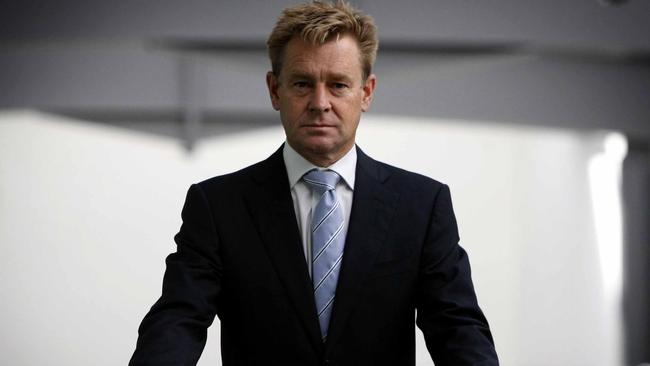
6. Australian Agricultural Company
ASX-listed
$1.45 billion of assets
When you think of the giants of the Australian beef industry it’s hard to look past the Australian Agricultural Company. Particularly this year with the ASX-listed AACo, Australia’s oldest continuously operating company, notching up 200 years of existence.
After starting with a grant for a million acres, and a charter from the British parliament, in 1824, AACo now runs Australia’s biggest beef herd of about 433,000 cattle across stations spread across 6.5 million hectares of Queensland and the Northern Territory.
The operation comprises 19-owned cattle stations, three leased stations, two owned feedlots and one leased farm. From this it produces premium branded beef for the Australian, North America, Asia, Europe and the Middle East markets.
The biggest stations in the portfolio are the 1.24-million hectare Brunette Downs Station in the Barkly Tablelands of the Northern Territory and Headingly Station, covering one million hectares near Urandangie in Queensland.
According to its latest financials, AACo has total assets of $2.3 billion, or $1.45 billion once liabilities are subtracted with the cattle herd alone valued at $584 million. It’s been an interesting 12 months for the company. In January, its major shareholder, British billionaire and former Tottenham Hotspurs owner Joe Lewis, pleaded guilty to a federal court in New York to providing third parties with non-public inside information for stock trades.
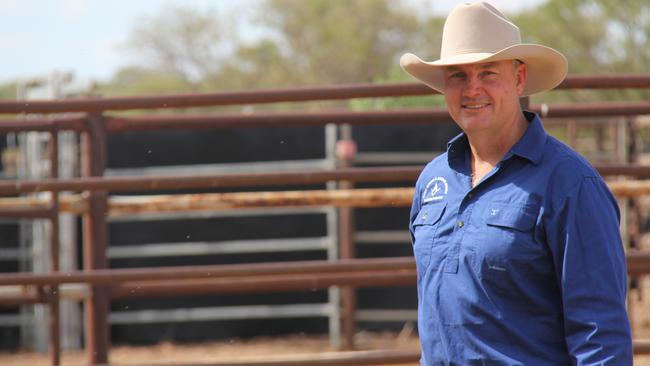
7. Fiera Comox
Canada
$1.25 billion of assets
Fiera Comox may be one of the new kids on the Australian agricultural investment scene, but by no means has its approach been child’s play.
During the past 18 months to two years the Canadian agricultural fund has taken a liking to broadacre cropping farmland in southern Western Australia, as well as, more recently, the Riverina region of NSW.
Fiera Comox’s Australian investments are channelled via Excel Farms, a partnership with managing director Nick Paterson – the son of prominent Western District landholders and ACE Radio owners Rowly and Judy Paterson — and Eastern Australia Agriculture.
The Excel Farms West Australian business expanded considerably during 2023 with the purchase of the 8554-hectare Cherylton Farms, at Kojonup, for $100 million, and the 12,000-hectare Southwark Soaks aggregation at Pingrup for more than $40 million. Earlier this year it added the five-farm Echidna Ridge Aggregation, totalling 6000 hectares, for an undisclosed sum.
Last year Excel also made its first acquisition in NSW, purchasing David Bartter’s $120 million Ballandry Station, which spans 26,839 hectares near Griffith in the Riverina.
It also own a series of assets in Victoria’s Western District near Mininera and Ecklin South and further north in the Mallee at Tutye. In April 2024 it listed 3800 hectares – namely the 2821 hectares Boorala Aggregation and the 967-hectare Karrara Aggregation – with expectations of about $57 million.
The Eastern Australian Agriculture portfolio comprises the 36,000-hectare Kia Ora and Clyde properties near Dirrinbandi in Queensland.
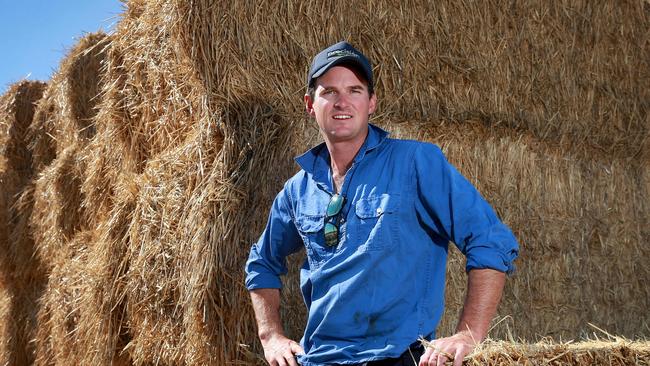
8. Manulife
United States
$1.2 billion of assets
Another North American constant on Australia’s farming landscape is Manulife Investment Management, formerly known as Hancock Agricultural Investment Group.
The company manages about 160,000 hectares across the US, Canada, Australia and Chile with a focus on permanent plantings and horticultural crops.
Its Australian business, headed by Wagga Wagga-born Andrew Strahley, includes the 19,877-hectare Cowl Cowl and Wyadra stations at Hillston in western NSW, purchased in early 2020 from the Harvard University endowment fund for more than $120 million.
The 604-hectare almond orchard at Wyadra boasts almost 192,000 trees. Historically, more than 3200 hectares of cotton and almost 6000 hectares of wheat, as well as barley and canola, has been grown on the property.
The Manulife portfolio also consists of a mix of permanent plantings assets in Victoria, Queensland, NSW including Tooleybuc Farms, along with Attis Farms and Pomona Farms Australia near Loxton and New Residence in South Australia’s Riverland region.
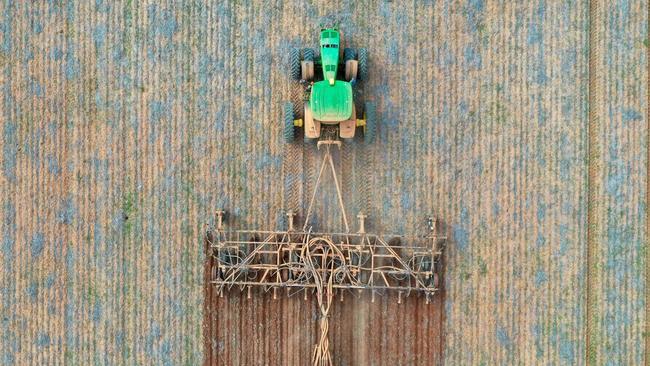
9. Auston Corporation
Canada
$1.2 billion of assets
A decade after entering the Australian market, AustOn, backed by Canada’s Ontario Teachers’ Pension Plan, one of the largest pension funds in the world, continues to flex its investment muscles.
Cashed-up Ontario has almost $A280 billion invested on behalf of its 340,000 members and pensioners.
It Australian agricultural investments have largely centred on the horticulture space, with two multi-milliondollar deals during 2023. In November AustOn announced it had purchased a major equity interest in Montague, which handles 18 per cent of the nation’s apple production and 15 per cent of stone fruit produce across orchards in Victoria, Tasmania and NSW.
The deal came eight months after it purchased a major stake in South Australia’s Mitolo Family Farms, one of Australia’s largest horticultural producers growing mostly potatoes and onions across 26 farms in NSW and South Australia. Also in 2023, AustOn purchased carbon abatement project company Green Collar.
AustOn’s other assets include a multimillion-dollar stake in the Pomona Valley orchard in Victoria’s Goulburn Valley, purchased in 2021, West Australian avocado producer Jasper Farms, purchased in 2017, and South Australian almond business Aroona Farms in 2014.
10. Alberta Management Investment Corporation
Canada
$1.1 billion of assets
Canada has been a huge source of capital for Australian agriculture during the past decade, with Alberta Management Investment Company rising up the charts to $1.1 billion worth of assets under management.
The investment manager of pension, endowment and government funds in Alberta, AIMCo has emerged as a major player during the past year following a number of notable transactions. As well as expanding its Lawson Grains portfolio with investment partner New Forests it created a new venture in northwest Western Australia.
Initially acquired from Macquarie Agriculture in 2021 for $600 million, the 105,000-hectare Lawson Grains portfolio is now about 120,000 hectares following an $85 million deal for the 13,900ha Jemalong Station near Forbes in NSW and a near-$40 million deal for the 2800-hectare Green Park Aggregation at Rand in the Riverina.
Late last year AIMco, with its newly established partner New Agriculture, purchased the 2.9-million hectare Kimberley Cattle Portfolio for $300 million, subject to regulatory approvals.
The Chinese-Australian Hui family’s Archstone Investment Group sold the portfolio, which comprises the Yougawalla Pastoral Co and Argyle Cattle Co, including seven pastoral leases covering 1.8 million hectares in total, five subleases covering 924,325 hectares, and an agistment agreement over 153,475 hectares.
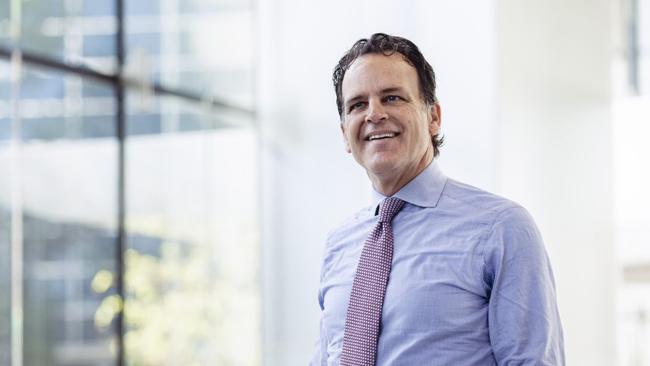
11. goFARM
Australia
$1 billion-plus of assets
goFARM is Australian family’s newest billion-dollar baby.
The agricultural investment and development company, partly funded by the wealth of Robert Costa, the late Anthony Costa and their families through their family investment vehicle Costa Asset Management, has topped the $1 billion mark in Australian assets for the first time this year.
Operated by Liam Lenaghan, goFARM’s major assets include the Sandmount Farms aggregation, comprising 27 individual farms between Numurkah and Cobram and a water portfolio of more than 50,000 megalitres, as well as the 10,000-hectare Canally Almond Orchards, near Swan Hill, run in partnership with a US agricultural fund.
The group also has oversight across the 1800-hectare Wonga Park Aggregation, the 26,673-hectare Petro Station and the 5000-hectare core of the Lake Boga Agriculture portfolio which it purchased with a 10,000-megalitre water portfolio in 2022.
In recent months goFARM have also embarked on a $120 million NSW Riverina almond growing expansion, snapping up 1758 hectaresa across three properties near Griffith in NSW, including the 700-hectare Stephendale vineyard at Yenda from Hong Kong Stock Exchange-listed CK Life Sciences.
In April, it snapped up 3300 hectares of mixed farmland west of Ballarat in western Victoria, purchasing the 2336-hectare Eurambeen Station at Beaufort and the 979-hectare Grandview near Ercildoune. Offers greater than $30 million were expected for Eurambeen Station.

AUSTRALIA’S BIGGEST LANDHOLDERS BY AREA
Viv Oldfield and Donny Costello
Crown Point Pastoral Company
9 million hectares-plus
Central Australian businessmen and former horse trainers and owners Viv Oldfield and Donny Costello have retained their title as Australia’s biggest landholder, including via their organic beef business, Crown Point Pastoral. Since teaming up 16 years ago, their vast portfolio now totals more than 9.2 million hectares, or more than twice the size of Switzerland. Their portfolio includes the 1.65 million-hectare Clifton Hills Station on the Birdsville Track in South Australia, and the 1.36 million Innamicka Station at Leigh Creek.
Australian Agricultural Company
ASX-listed
6.62 million hectares
The Australian Agricultural Company comes up trumps when you think of the scale and value mixed with longevity. Celebrating 200 years of existence this year, AACo operates across a massive footprint representing about 1 per cent of Australia’s land mass. It operates three stations around the million-hectare mark — the 934,900-hectare Anthony Lagoon and Eva Downs business in the Northern Territory’s Barkly Tablelands region, the one-million hectare Headingly Station at Urandangie in Queensland and perhaps its most famous asset — the 1.24-million hectare Brunette Downs Station in the Northern Territory.
North Australian Pastoral Company
6 million hectares-plus
The North Australian Pastoral Company is one of Australia’s oldest and largest cattle companies. Founded in 1877, the company comprises 15 properties and a feedlot spread across the Northern Territory and Queensland, with a head office in Brisbane. Combined, the properties are home to about 200,000 cattle. The biggest stations in the NAPCO portfolio are Alexandria in the Northern Territory, covering 1.64 million hectares and capable of running 80,000 cattle, and the 1.29 million hectare Marion Downs at Boulia in Queensland.
Williams family
Williams Cattle Company
4.65 million hectares
South Australian pastoralists the Williams family have climbed to the fourth-largest landholders in Australia, following the MacLachlan family’s decision last year to carve up the mighty Jumbuck Pastoral Company. A partnership between 15 family members runs 4.65 million hectares, including Australia’s largest cattle station, the vast 2.37 million hectare Anna Creek and The Peake, added to their portfolio in 2016. Other assets include the 701,000-hectare Hamilton Station at Oodnadatta in South Australia.
Macquarie Agriculture
Australian-based fund
4.5 million hectares-plus
Australia’s second-biggest farmland investor by value also looms large on the scale front with a footprint of more than 4.5 million hectares. The biggest chunk of that scale is made up through its ownership of Paraway Pastoral Company, which operates across 27 stations totalling a whopping 4.48 million hectares. The company also looms large on the cropping front, including owning Australia’s biggest cotton farm, the 93,000-hectare Cubbie Station, at Dirrinbandi in Queensland.
Hughes family
Hughes Pastoral Company and Georgina Pastoral Company
3.9 million hectares
Regarded as Wagyu pioneers and cattle royalty, Queensland’s Peter and Jane Hughes’ Hughes Pastoral Group and Georgina Pastoral Company own a portfolio of 3.9 million hectares across Queensland, NSW and the Northern Territory. The family’s home base, 140,000-hectare Tierawoomba aggregation, carries a herd of 25,000 Wagyu-cross cattle. More recently they paid about $100 million for Riveren and Inverway stations in April 2022 after securing the 438,000-hectare Miranda Downs station at Normanton in 2021.
Gina Rinehart
S Kidman and Co (Australia and China) and Hancock Agriculture
3.5 million hectares
Billionaire Gina Rinehart has oversight over an Australian agricultural portfolio totalling about 3.5 million hectares. Following a highly-publicised restructure, involving the sale of 10 cattle stations, the S Kidman and Co portfolio now comprises a consolidated 891,000 hectare Durham Downs, 570,000-hectare Helen Springs, the 623,000-hectare Morney Plains and 14,600-hectare Rockybank. Hancock Agriculture has much more diversified holdings including the 8731-hectare Ottley Station, west of Inverell in northern NSW, and the 10,029-hectare Moolan Downs Aggregation in the Western Downs region of Queensland, purchased from Packhorse Pastoral for $80 million last year.
McDonald Holdings
3.36 million hectares
The family owned-and-operated McDonald Holdings operates one of Australia’s largest beef cattle operations across 14 properties in outback Queensland. The business, which has been in operation since 1827 has spanned seven generations and now runs in the order of 150,000 cattle. Cattle are bred in the Cape York Peninsula region and then make their way south, being backgrounded around Cloncurry and Winton and finished on grain at the MDH feedlot on the Western Darling Downs.
Consolidated Pastoral Company
Australia-UK
3.23 million hectares
Founded in 1879, Consolidated Pastoral Company is one of Australia’s largest pastoral players now operating across 3.2 million hectares. Major shareholder of the company is UK-based private equity guru Guy Hands and wife Julia who bought the portfolio through the Hands Family Office in 2020. Recent acquisitions have included in the 17,600-hectare Jimarndy Aggregation at May Downs in Queensland in October 2022 and the 15,346-hectare Linamar Station, to complement its existing Isis Downs property at Isisford in March this year.
Brook Pastoral Company
3 million hectares-plus
The Brook family own and operate five properties covering more than three million hectares of Channel Country in Central Australia, as well as a sixth farm in southeast Queensland. Headed by former Birdsville Pub owners David and Nell Brook, the family runs a large-scale organic beef business supplying natural beef brand OBE Organic. The Channel Country operations comprise the 780,000-hectare Adria Downs as well as Alton Downs, Cordillo Downs, Kamaran Downs and Murnpeowie Station.
Alberta Management Investment Corporation
Canada
3 million hectares
Underpinned by a $300 million acquisition late last year, Canadian pension fund AIMco has surged up the rankings as one of Australia’s largest landholders. Late last year AIMco, with their newly established partner New Agriculture, purchased the 2.9-million hectare Kimberley Cattle Portfolio, subject to regulatory approvals. AIMco, and investment partner New Forests, also operates the Lawson Grains portfolio, which they purchased for $600 million in 2022 and have since expanded to about 120,000 hectares.




